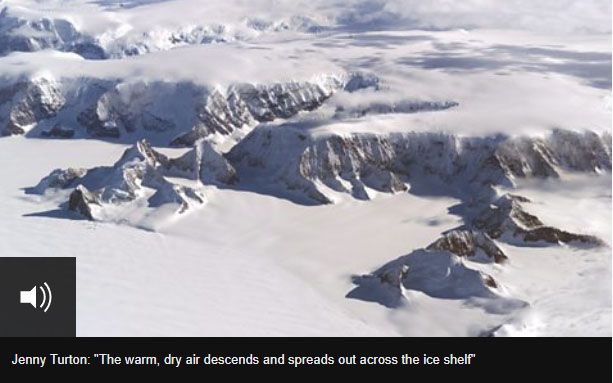The occasional mention of foehn winds on the weather segment of the six o'clock news has always fascinated me, and I am still not entirely sure how they work. I understand that the air cools as it is lifted over high mountains and gives up its moisture as rain, but it's the warming effect of coming down the other side of the mountain I have not got a handle on. This article on the BBC Science News talks about foehn winds in Antarctica and how they creating large ponds of melted ice. This is the first time I have heard about this, although the link was branched from a more current story about a failed trip to study the waters under the huge 'A68' iceberg that broke away from the Antarctic ice shelf July last year (goodness, was it really that long ago?!)
http://www.bbc.com/news/science-environment-39759329

Listen to the radio discussion if you have ten minutes. It's fascinating stuff, and helped me get a bit closer to understanding how foehn winds work.


